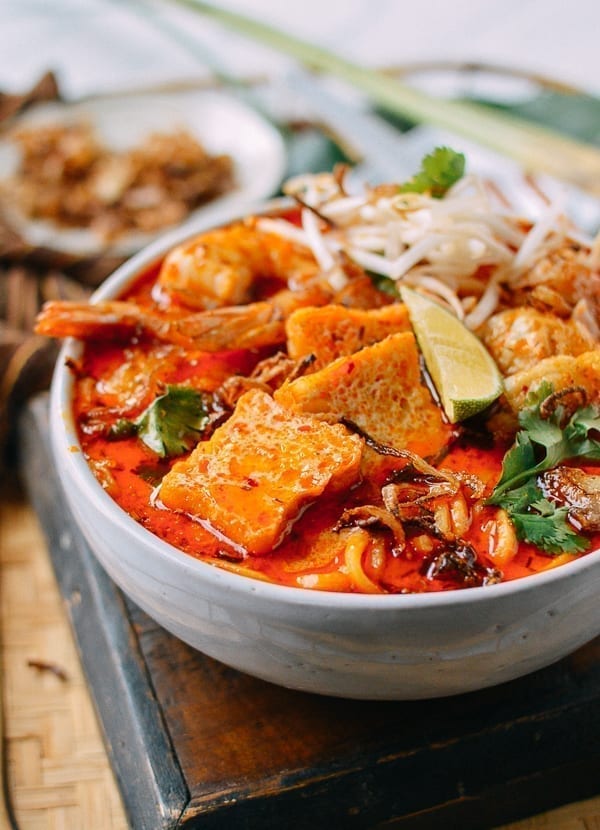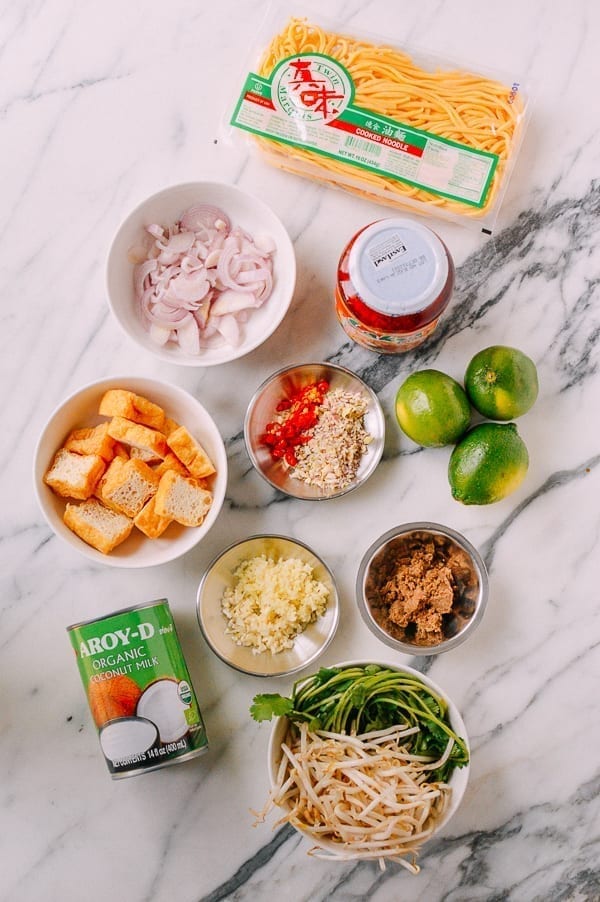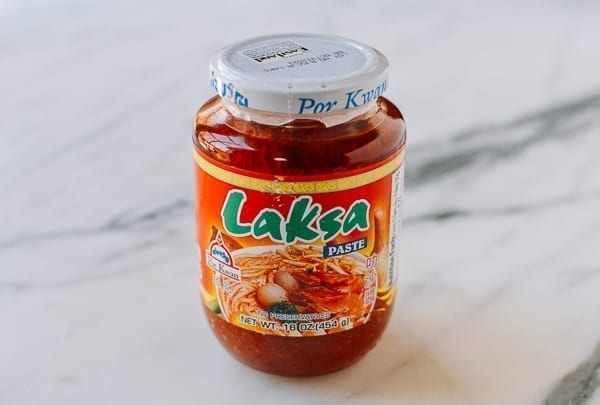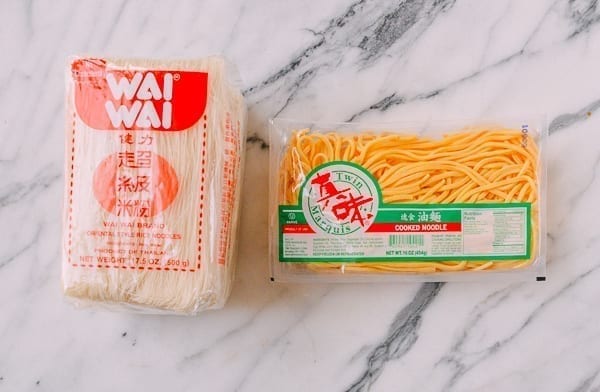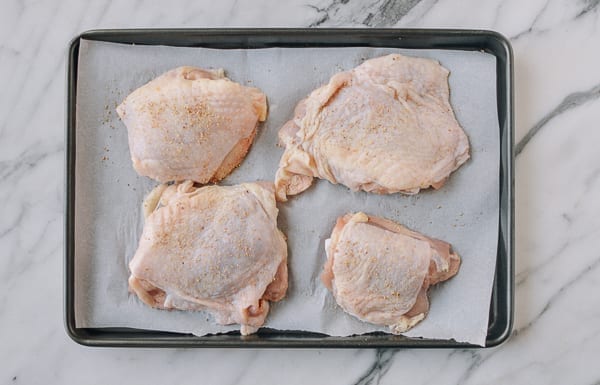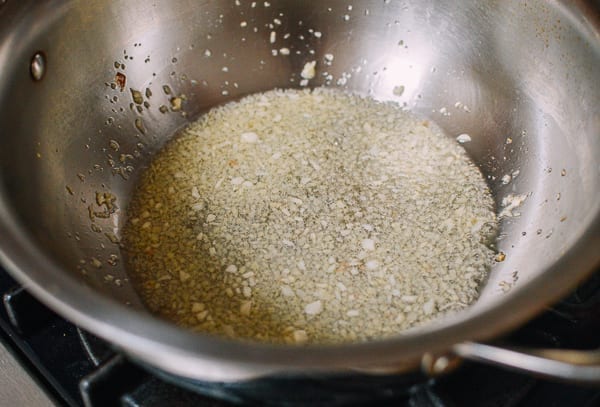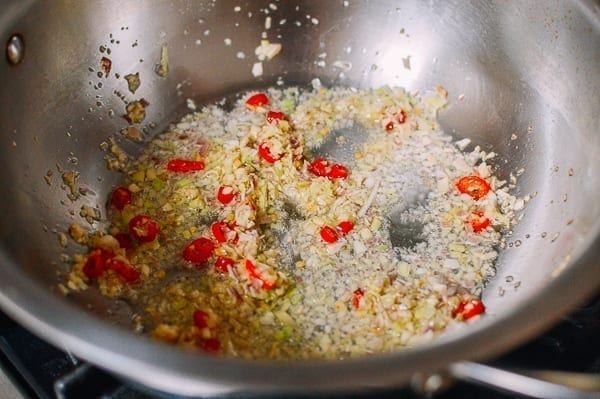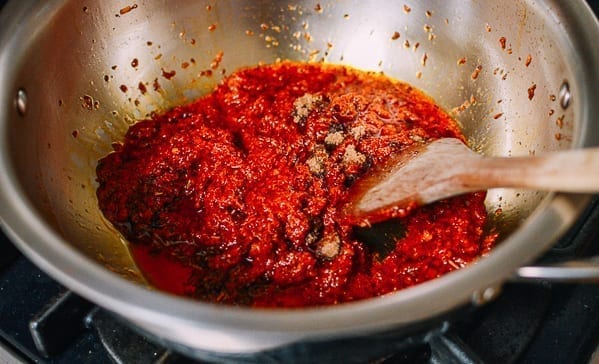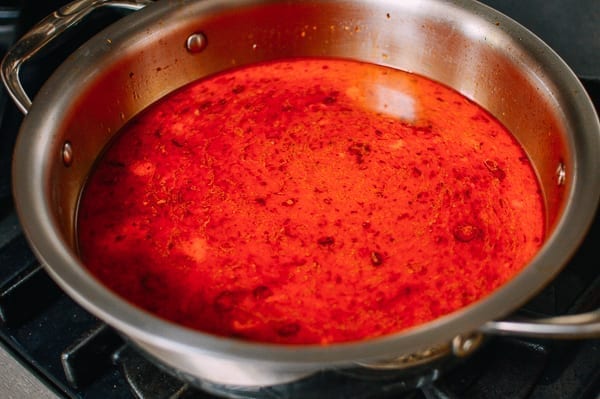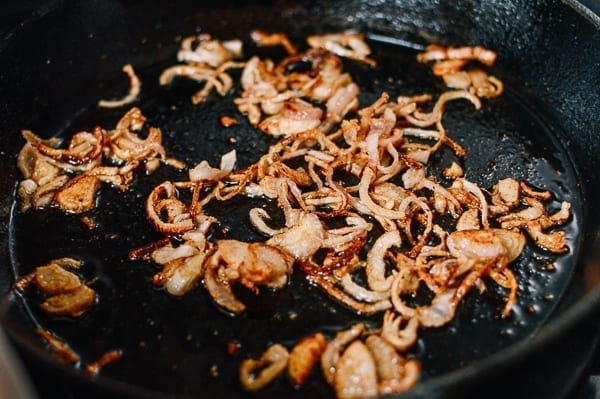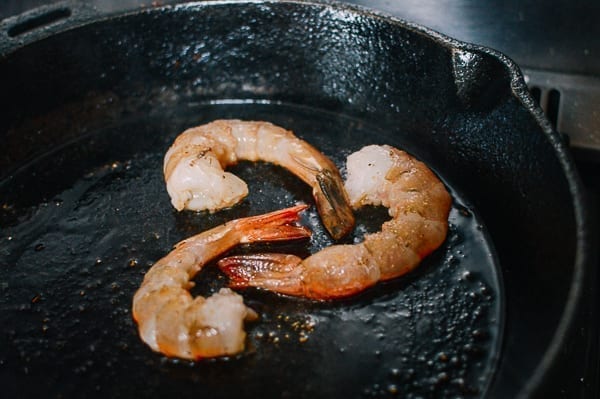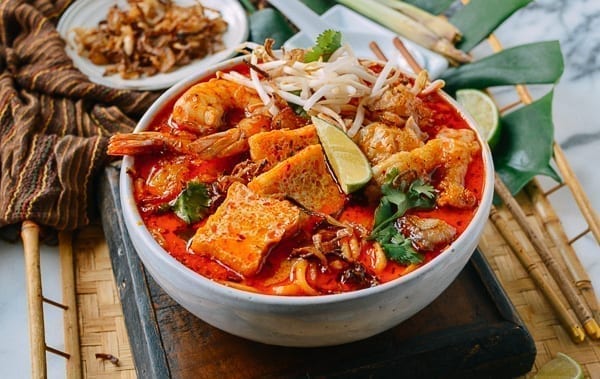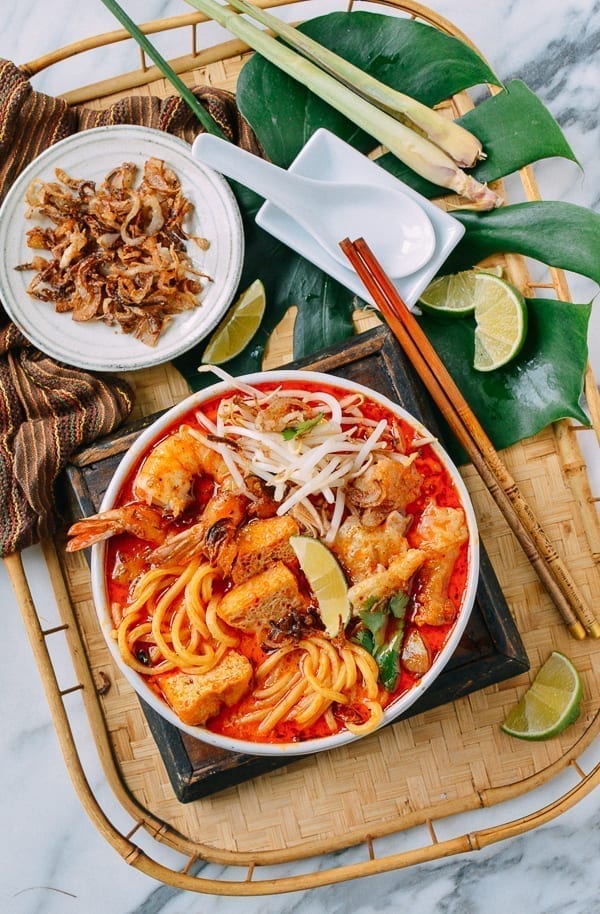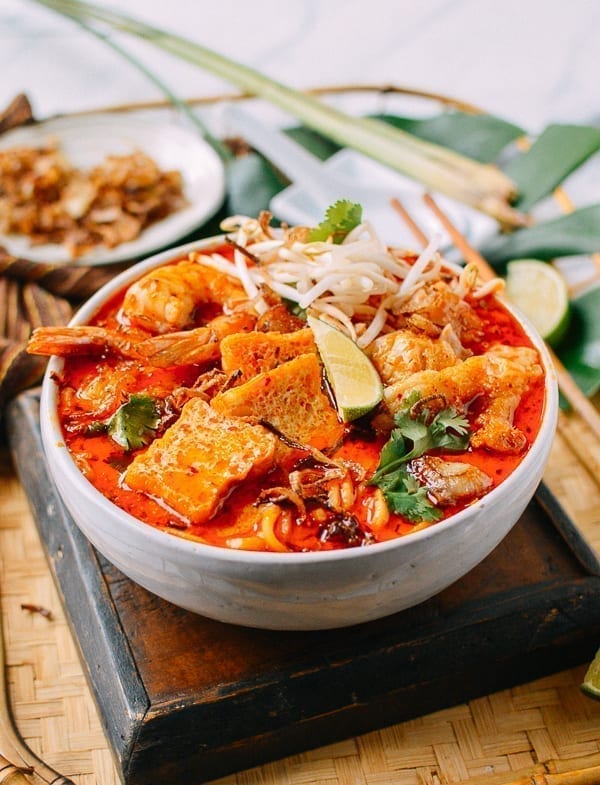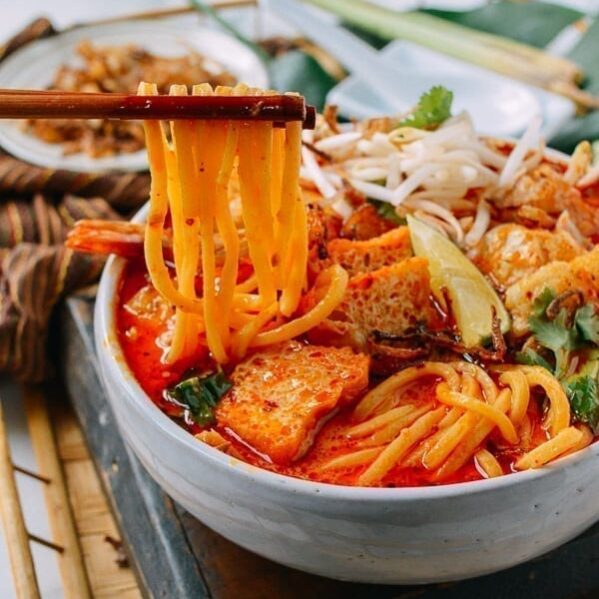What is Laksa?
Laksa is spicy, fragrant noodle soup found across Southeast Asia, particularly Singapore, Malaysia, and Indonesia. It consists of noodles (either wheat noodles, rice vermicelli, or egg noodles/hokkien noodles) in a thick broth made with spices, fresh aromatics, shrimp paste, and coconut milk. Common toppings include fried tofu puffs, fish cakes, blanched cockles, chicken, shrimp, minced laksa leaves, bean sprouts and other vegetables. Another version of laksa is made with a sour asam (usually tamarind) soup base, though the curry/coconut milk version is more commonly found outside of Asia. The dish’s origins lie in Peranakan cuisine, also known as nyonya cuisine, which combines Chinese and Malay culinary influences.
Developing Our Recipe
I’ve eaten laksa in restaurants, but ended up doing quite a bit of research to come up with my own recipe. I watched food vloggers in Singapore sampling laksa at various local stalls, and tried other laksa recipes from a variety of sources. I quickly realized that everyone probably has a slightly different opinion of what their “ideal” laksa looks and tastes like.
So let me tell you a little more about this recipe and what I do a little differently:
This Laksa recipe doesn’t shy away from strong, authentic flavors. The base ingredient is laksa paste (the Por Kwan brand of laksa paste can commonly be found in Asian grocery stores and online), which is made with chilies, onions, garlic, lemongrass, galangal, dried shrimp, shrimp paste, and spices. It packs a mighty flavor punch!
Some recipes use chicken breast, or they specify boiling the chicken to cook it. I think roasting bone-in chicken thighs maximizes flavor, while also creating the best texture. Juicy chicken and crispy skin, shredded over that hot bowl of noodles? Yes please. I also like to cook the shrimp (prawns) separately from the soup, so they don’t get overcooked. I also prefer the flavor of shrimp that has been quickly seared. Some recipes only use laksa paste, but I like to add some fresh ginger, garlic, lemongrass, and chilies to create a brighter, fresher flavor in the broth. There are differences of opinion when it comes to how thick/creamy people like their laksa. The main lever you have to work with here is the amount of coconut milk. I would say this laksa recipe is somewhere in the middle of the creaminess scale, but you can feel free to add more or less coconut milk based on your preferences. We used Hokkien egg noodles in this recipe, but you could also use thin rice vermicelli or fresh/dried wheat noodles. All are acceptable for laksa!
Laksa Recipe Instructions
Preheat your oven to 400 degrees F. Season the chicken thighs with salt and pepper (we used white pepper, but you can also use black pepper), and place on a baking sheet lined with parchment paper. Bake in the oven for 40 minutes. Remove from the oven and set aside.
While the chicken is cooking, heat 2 tablespoons vegetable oil in a large saucepan or medium pot over medium heat. Add the minced garlic and ginger and cook for 1 minute.
Throw in the minced lemongrass and chilies, and cook for 3 minutes.
Add the laksa paste and brown sugar. Fry for another 3 minutes, letting all the flavors meld together.
Add the chicken stock, coconut milk, and fish sauce. Bring to a boil. Add the soy puffs, cover, and allow to simmer for 10 minutes.
Meanwhile, rinse the noodles in warm water (for cooked hokkien noodles or rice vermicelli) or prepare according to package instructions (for fresh or dried wheat noodles). Distribute among four large noodle soup bowls. Shred the cooked chicken and skin and distribute among the bowls. Pour any juices from the roasting pan into the broth. (You can even use a little bit of warm water to scrape any lingering tasty bits off the parchment paper). Season the broth with lime juice and more fish sauce to taste, until your broth has reached your desired levels of saltiness/sourness. If you would rather not use fish sauce as your salting agent (it can be quite pungent to some palates), season with salt instead. Meanwhile, toss the thinly sliced shallots in flour until they’re lightly coated. In a cast iron pan, heat an additional 2 tablespoons oil. Fry the shallots until crispy and set aside.
Season the shrimp with salt and pepper and sear them in the same oil you used to cook the shallots until cooked through.
To assemble the laksa, pour the broth over the noodles and chicken, and add a couple pieces of soy puff to each. Top with the cooked shrimp, bean sprouts, cilantro, and fried shallots. Serve with extra lime wedges, and enjoy!
We really hope you enjoy this recipe––it is so delicious and comforting on a cold weather day.
